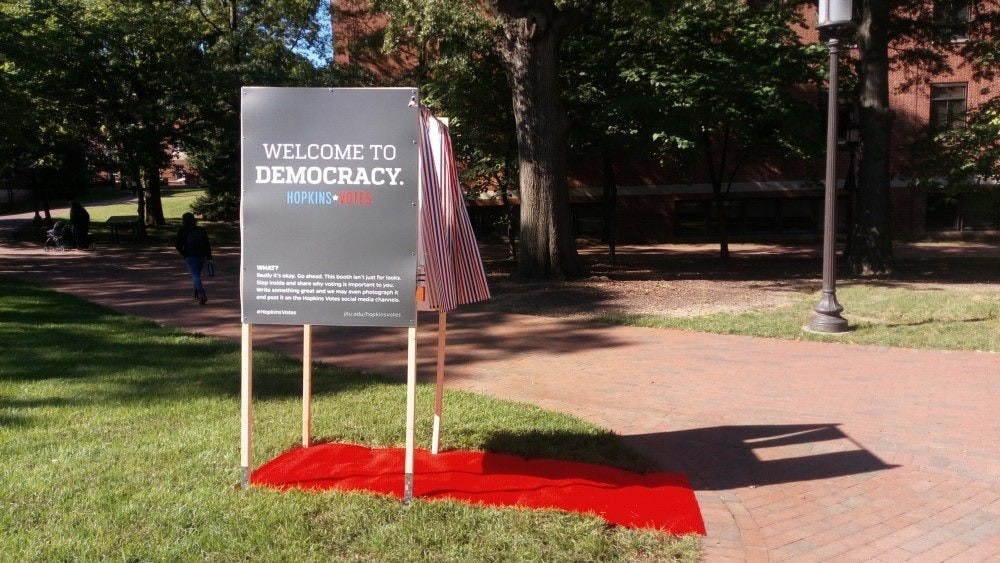
In the weeks leading up to the 2018 midterm elections, Hopkins has been surprisingly full of “get out the vote” energy. But do the courts and legislatures care as much about our vote as we do? In the midst of the midterms, I look at how America’s voter policies support — or suppress — the youngest voters.
Historically, college students vote at lower rates than the general population. As college students, we face unique voting challenges. Many young people have yet to even register to vote by the time they’re off to college, and we’re often bouncing around from address to address.
For students away from home, absentee ballots play a huge role in voting. All states allow its out-of-town residents to request and submit an absentee ballot. While it may be a bit of chore for the busy college student, the option thankfully exists, and online programs like TurboVote are making it easier for students to get reminders about when their ballots are due.
For students who choose to vote where they go to school, you have Symm v. United States to thank. The 1979 Supreme Court case reaffirmed students’ rights to bona fide residency where they attend school and thus the right to vote there. But despite this legal precedent, there are states and counties who still want to block our vote.
In 2016, three Furman University students sued Greenville County, S.C. for its gross attempts to stop the college’s voters from casting local ballots. Students who registered with a campus address were forced to complete an additional form, having to answer questions like whether they had a bank account, a job and any ties to the community.
The courts sided with the students, and the policy was overturned. The following election, Furman saw its student turnout rate increase by six percent.
Legislatures at the state level have also been shown to block college students from voting. In New Hampshire this year, the governor signed a bill requiring registered voters to be permanent residents with state IDs and registered vehicles — effectively blocking college students who want to vote where they go to school.
In some cases, local officials have closed polling places near universities. Just days before the midterms, Texas State University students were calling on county leaders to reopen an easily accessible local polling station used during early polling and to extend voting hours. The Hill reported that a local Republican official said in an email that doing so “probably means that it is going to favor the Democrats, so maybe I should not be in favor of this.”
Policies that suppress the vote of college students typically come from Republican states or districts. College students often vote more Democrat, and Republican politicians get frustrated with temporary populations skewing the vote against them. But even if those frustrations are valid, voter suppression shouldn’t be the answer.
In recent years, the real push to get college students to vote is coming from campuses themselves. University of California, San Diego created the Student Organized Voter Access Committee, which works to increase voter registration rates and voter turnout within their community. Many colleges have adopted TurboVote, an online tool that makes it easy for students to register and be notified when elections are happening.
Despite the fact that our campus isn’t always the most politically active, we’ve seen a great push for civic engagement at Hopkins this midterm season. The Center for Social Concern and SGA are organizing buses to the polls, and IDEAL helped coordinate “absentee ballot parties.” Colleges should continue to advocate for and support our vote — and hopefully, any anti-student legislatures can follow suit.





